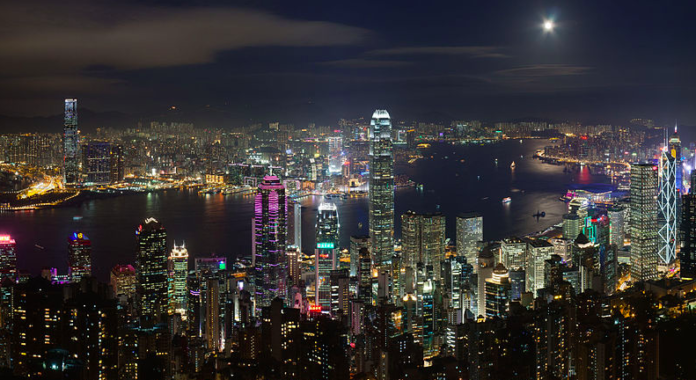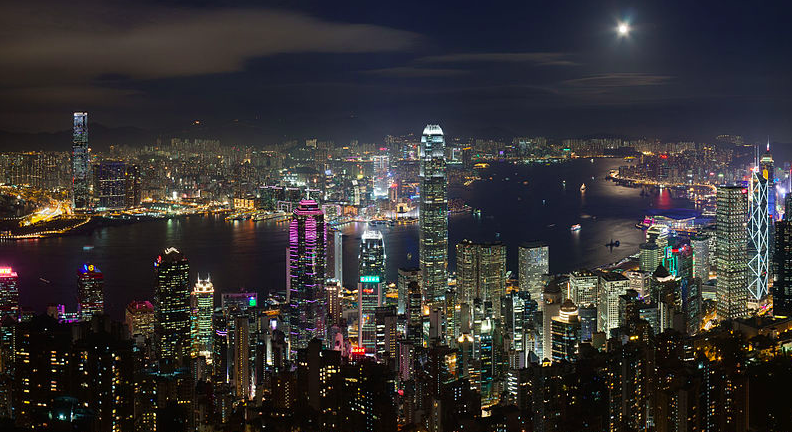
I first met Jason Lee when he was promoting jazz concerts in his hometown of Hong Kong. More recently, he has been sending me Facebook messages about the Hong Kong protests. You would think that a relatively prosperous, 43-year-old Hong Konger would support the demonstrations that have rocked that city since June. Well, you may be surprised by his views.

Lee, who spends time in both Hong Kong and mainland China, says protesters’ attacks on police and government buildings “are going too far.” Referring to how they recently closed the Hong Kong airport, he asks, “Would the USA let JFK airport be occupied for one day?”
Protestors carrying British flags and spray-painting anti-communist slogans on legislative offices don’t understand the region’s colonial history when British troops brutally occupied Hong Kong, Lee tells me in a phone interview.
“I’m Chinese from Hong Kong,” says Lee. “I love my country, China.”
The protest movement began in opposition to a proposed extradition law, which demonstrators said would allow political dissidents to be extradited to China. Hong Kong officials said the law wouldn’t be used for political repression but later withdrew it.
Some Hong Kongers, Lee included, think the protesters’ calls for “democracy” are really demands for independence from China, even a return to British colonial rule.
“They want the movement to go on and on by raising new demands,” Lee says. “And then they claim the government isn’t responding.”
Sharp class divisions
Help us save local journalism!
Every tax-deductible donation helps us grow to cover the issues that mean the most to our community. Become a 48 Hills Hero and support the only daily progressive news source in the Bay Area.
One major factor driving the protests is economic inequality. For many years, Hong Kong was a key financial and commercial outpost for the People’s Republic of China. But, as the PRC’s economy expanded, it didn’t need Hong Kong as a middle man and the territory’s economy declined relative to China’s.
Meanwhile, Hong Kong billionaires made huge profits, leading to one of the world’s highest rates of income inequality.
Housing is now in short supply and Hong Kong rents are the highest in the world. Many young adults still live with their parents or crowd into small, subdivided apartments.
“My apartment is 350 square feet,” Sean Starrs, a Hong Kong professor, told the Real News Network. “My students say, well what do you do with all that space?”
And, as always, Washington is happy to take advantage of those complaints for its own odious purposes.
In the old days, the CIA would slip wads of cash to dissidents in order to promote anti-government riots and install pro-US regimes. That method worked for Iran in 1953 and Chile in 1973.
Nowadays, the United States uses the National Endowment for Democracy to spread propaganda to accomplish the same goals. The NED is supposed to build democracy but in reality promotes dissidents who favor US-style capitalism, and it funds aspiring autocrats.
I don’t think the CIA initiated the demonstrations, but the events bear a strong resemblance to other US-manipulated “color” revolutions.
Color revolutions vs. genuine uprisings
With the collapse of the USSR in 1991, several former Soviet republics faced a series of elections, mass demonstrations and coups. In Georgia the uprising was called a “rose revolution.” In Ukraine, it was orange. During the 2013 Maidan revolt in Ukraine, the US role in manipulating the mass movement and selecting the country’s new president was revealed publically.
On the other hand, popular, mass uprisings in 2011 overthrew dictatorships in Tunisia and Egypt. So how do you tell the difference between genuine uprisings and the color revolts?
The key questions are who is leading the protests and what would happen if they took power? Would the country go in a progressive direction or join the reactionary camp led by the United States? While no one party or recognized coalition leads the Hong Kong protests, there are identifiable political trends.
Political trends in Hong Kong
The pan-democratic forces call for universal suffrage and direct elections of Hong Kong officials. Critics say those calls for democracy cover up their close alliance with US policy and their rejection of eventual unity with China. The pan-democrats suffered surprising losses in last year’s legislative council elections.
The umbrella protests of 2014 accelerated the rise of another trend, the localists, a xenophobic rightwing movement that calls for “self-determination” (independence) from Beijing.
“They think Hong Kongers are better than Chinese,” says Elvin Ho, a retired business consultant living in Hong Kong. Native Hong Kongers mostly speak Cantonese, he explains in a phone interview. “Localists will pick a fight with random targets during the riot, who speak Mandarin, and bully them.”
Imagine for a moment that the PRC ceased to exist. Would Hong Kong transform itself into a democratic society? I think some combination of localists and pan-democratic forces would come to power and then violently repress those who supported the PRC and the previous Hong Kong government.
Sound farfetched? That’s what has happened when the pro-western forces came back to power in Ukraine and Hungary.
But the PRC does exist, and it’s not about to allow Hong Kong independence. China has massed paramilitary police along the Hong Kong border as a clear threat against the protestors. Many Hong Kongers are getting tired of the constant disruptions and violence on both sides.
So far the Hong Kong government has bided its time, hoping the public will tire of the constant turmoil. We can only hope the current crisis ends without further violence.
